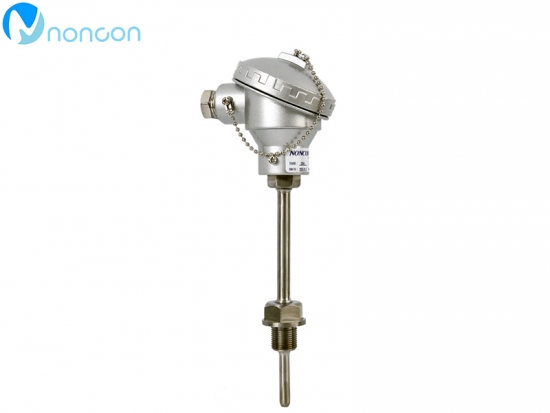
Blog Categories
Recent Posts
How to use the temperature transmitter correctly to extend the service life
The integrated temperature transmitter is generally composed of a temperature sensor probe and a two-wire solid electronic unit. It adopts a solid module form to install the temperature sensor probe directly in the junction box, thus forming an integrated temperature transmitter.Integrated temperature transmitter is the combination of temperature sensor and transmitter, which converts the temperature signal in the range of -200~+1600 ℃ into the two-wire 4-20mA DC electrical signal transmission to display instrument, regulator, recorder, DCS and so on in a very simple way, so as to realize the measurement and control of temperature.Integrated temperature transmitters are usually divided into two types: thermal resistance and thermocouple.
Integrated temperature transmitter a device that converts physical measurement signals or ordinary electrical signals into standard electrical signal outputs or that can be output by means of a communication protocol.Temperature transmitter is an instrument that converts temperature variables into transmissible standardized output signals. It is mainly used for the measurement and control of temperature parameters in industrial processes.The current transmitter converts the ac current of the main loop under test into a standard signal of the constant current loop and continuously transmits it to the receiving device.
The temperature current transmitter converts the signal of the temperature sensor into a current signal, which is connected to the secondary instrument to display the corresponding temperature.The use of temperature transmitter is introduced in the hope of helping users better use of temperature transmitter products.
Use the process correctly
1, the power should be used instrument power and no peak, careful use of switching power, especially the smart meter with its own switching power, otherwise easy self-excitation damage transmitter.
2. The transmitter standard shall be carried out after 2 minutes of charging, and the measuring temperature shall not exceed 70% of the full range, let alone exceed the range.
3. Don't adjust the potentiometer too fast and too hard.
4. If high temperature (100℃) or low temperature (5℃) is to be measured, the sensor cavity and the junction box should be isolated with high temperature resistant filling materials (such as silicone rubber) to prevent the junction box from burning too high temperature and low temperature condensation inside the transmitter or sensor.
5. The power supply shall be grounded by shielding layer to prevent lightning strike, and the pressure wire nut shall be screwed tightly to ensure air tightness and moisture resistance.
6. The transmitter shall be calibrated once every 6 months. The thermocouple type has not been modified with the current description of recommended range selection to ensure its accuracy.
Use the point
1. Wiring: The wiring of the safety spark circuit (input signal wire) must be the wire with insulation sleeve or shield, and it should be isolated from the wiring of the unsafe spark circuit to avoid mutual contact.
2. Temperature transmitters of different types shall be wired according to the instructions. When wiring explosion-proof instruments with safety spark circuit, the connection must not be wrong, and it is necessary to carefully check whether there is short connection or wrong connection.
3. When using the temperature transmitter, special attention should be paid to the distinction between the common type and the native safe type. The common type cannot be installed in the danger area, while the native safe type can be installed in the danger area.
4. The input of thermal resistance transmitter is three-wire system. The line resistance of each connection wire should be equal and in the same ambient temperature.
Operational Considerations
1. Please read this manual thoroughly and carefully before operating the instrument to understand the instructions.
2. The product storage and storage place shall meet the following conditions: rainproof and waterproof.Prevent mechanical vibration and impact.Temperature and humidity meet the requirements: can maintain the conventional conditions (25°C, 65%RH) other please refer to the standard specifications.
3. Avoid installation and storage in the atmosphere containing corrosive media.
4. When installing transmitters in hazardous areas, follow the following instructions to ensure safety.Only qualified personnel who are familiar with the state and regulations, regulations and relevant standards of hazardous areas can install transmitter modules.
Related products: vortex flow meter, ultrasonic flow meter


